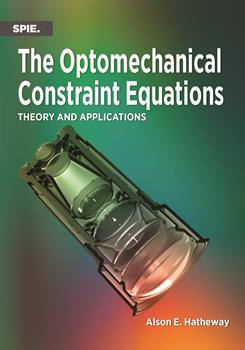
This will count as one of your downloads.
You will have access to both the presentation and article (if available).
This will count as one of your downloads.
You will have access to both the presentation and article (if available).
This course teaches the basic requirements for accurately predicting the influences of thermal, structural and servo system designs on the performance and quality of optical imaging systems. It is based upon the instructor's forty years' experience in designing, analyzing and building complex optical systems, especially for the Federal market place. It incorporates elements from some of his earlier tutorials, "Finite Element Methods in Optics," "Optical Flexures" and "Optomechanics and the Tolerancing of Instruments." The instructor will review the goals of "Integrated Analysis" as promoted by NASA and DoD since the early 90's. Strengths and weakness of various approaches will be discussed. Special optomechanical modeling tools (the Optomechanical Constraint Equations and the Optical Analog) will be presented in some detail. Analytical error functions will be developed and evaluated. Sources of analytical error will be discussed and analyzed. Analytical error budgets will be developed and compared for various approaches to end-to-end analysis of systems. A candidate strategy will be presented for consideration.
The course will be illuminated with both text book-type problems and actual examples of applications from the instructor's experiences. The students will learn the strengths and weakness of the analytical methods in the various disciplines, how to estimate the sources and magnitudes of errors in various approaches to analysis, how to put together an error budget for a proposed analytical effort and how to select the most appropriate methods for end-to-end system analysis.
This course teaches mechanical engineers and designers how to identify and evaluate the features in a mechanical design that may contribute to image motion (registration errors) at the detector. Registration errors may cause an otherwise sharp image to appear blurred (focusing error) and for even sharp images to be in the wrong place (tracking error). Registration errors are controlled by the optomechanical constraint equations that relate all the motions of all the elements in a system to the position, orientation and size of the image at the detector. The students are taught to develop the optomechanical constraint equations from the optical imaging laws and to use them to specify alignment requirements, calculate thermal sensitivity and distribute dimensional tolerances in optical metering structure.
View contact details
No SPIE Account? Create one


